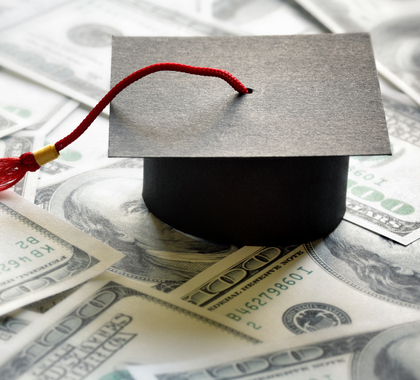
Student loans are a hot topic right now in the United States. The current statistic is that roughly 44 million people carry a total of $1.5 Trillion of student debt. My wife and I are a part of that statistic too; we carried student debt coming out of college. So what is student debt, and what options are available to you? I’ll be focusing on the “what” while avoiding the topic of repayment options as this is where student loans get more complicated.
44 Million Americans carry a total of $1.5 trillion in student loans.
The Student Loan Program
Student loans in the U.S. have been around for decades starting with the National Defense Education Act (NDEA). Our main focus though is the student loan program in the last decade (2010+). There are two different offerings of loans, federal and private. Federal loans are provided by the government and have limits and rates set by Congress. The rate is fixed at the time the loan is taken and they’re backed by taxpayers. Private loans are offered through supporting banks like Discover or Navient. Within the federal loans, there are subsidized and unsubsidized loans along with Perkins loans which have ended in 2017.
Subsidized Loans
Subsidized loans are the best types of loans if you must take out a loan. These loans accrue interest while you are in school, however, the interest is paid by the federal government (aka taxpayers). This is what makes them so nice. However, they come with a limit. Over the span of your 4 years, you can only incur up to $23,000 as of 2019. Once the loan enters repayment, you will then be responsible for paying for the interest.
Deferment – Student loan status when the student is in school at least half-time or more. Loans will no longer be required to be paid, unless the prior agreement states, but will still accrue interest.
Unsubsidized Loans
Unsubsidized loans are the same as subsidized loans, however, they have different limits, and the interest accrued is paid by the student. Interest will accrue for the years you’re in college but the interest is not compounded onto the principal until the loan enters repayment. Federal loans have a limit of $31,000 with no more than $23,000 of them being subsidized as of 2019.
Federal Perkins Loans
I’m adding a quick section of Federal Perkins loans as I’ve had them myself and will reference them in other posts. These loans are backed by the government as well, but given out by schools on a need basis. They’re locked at a 5% fixed rate. These are a form of subsidized loan but do not add to the limit given above. Repayment will be to your school.
What do the loans cover?
Student loans can cover a wide arrange of expenses that may occur during your time in college. This can be your housing, travel, food, books, or anything else you may need. Direct federal loans, covered above, are more restrictive to things such as housing and food where private loans may cover anything. Some people, though it may not be a wise idea, will take out additional private loans to cover their social lives while in school.
Student Loan Statuses
Student loans have multiple statuses that classify the loan; Deference, Forbearance, Grace, and Repayment.
Deference: When a student is considered fulltime or half time (and other requirements), they may have their loans deferred which means their loan payments are not required to be made. Student status is depended on the school, the number of credits, and undergrad vs graduate-level status.
Forbearance: When a student encounters hardship during repayment, they can request to enter forbearance status. This is similar to deference, however, any subsidized loans will no longer be subsidized and will begin to accumulate interest. The interest accumulating on any of the loans will also start compounding. This status is essentially a stop-payment to prevent late payments and fees; this should be one of your last measures used when handling your loans. Balances can quickly inflate when payments are not made or are less than the interest that has accumulated.
Grace: When the student leaves full or half-time status by either graduating or dropping out, their loans will enter their grace period. The grace period is 6 months, and Perkin loans are 10 months, of additional deference status giving the student time to get a job and prepare to start paying for the loans. In the event that the student goes back to half-time or more status, the grace period will reset and the loans will go back to deference status; allowing the student another 6 months grace period when they stop school.
Repayment: This status is when you’re actively paying you loans on the agreed schedule and the grace period has ended. If you go back to school after entering repayment, the grace period will not reset but the loans will still enter deference status. This means when stopping school, the loans will enter repayment right away.
- Previous Post
- Next Post

